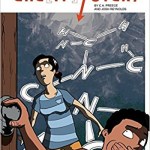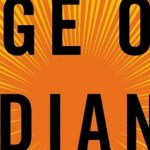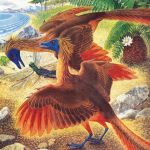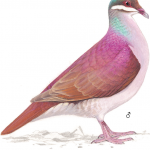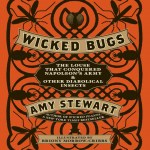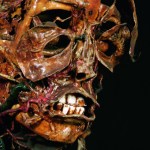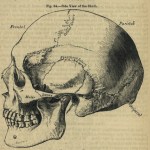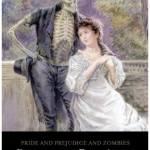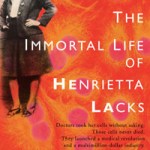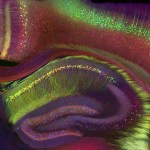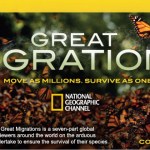Book reviews
Let's start with CheMystery.
This is a fun graphic novel mystery book by C.A. Preece and Josh Reynolds. Two cousins experience an incident that would make a physicist cry, but that works in a chemistry book because they now have the ability to observe and change matter. So this is a superhero book, designed to teach chemistry. The story is great, the science is great, and the pedagogy is well suited for kids and adults that like graphic novels.
Preece is the chem teacher (high school) and Reynolds is the artist.
This is written for grades 7 through 10 (ages 8-12) but some younger kids…
The Age of Radiance: The Epic Rise and Dramatic Fall of the Atomic Era by Craig Nelson (author of Rocket Men: The Epic Story of the First Men on the Moon) is a well done history of the atomic age. If you are a bit squeamish (justifiably I'm sure) about the nuclear industry or nuclear stuff generally you'll find Nelson's dismissal of your concerns as the product of a public relations fail on the part of the nuclear industry to be patronizing and annoying, but there isn't too much of that in the book, and he's partly right; most fears people have about nuclear energy are not especially accurate…
There are over 10,000 species of bird on the Earth today. There is one blog called "10,000 Birds" for which I write a monthly article, in case you did not know. But this post is about Ten Thousand Birds: Ornithology Since Darwin, a book by Tim Birkhead, Jo Wimpenny and Bob Monegomerie.
Birds and various studies of birds are central to evolutionary theory and the development of all of the surrounding biology and science. Here's a short list of key roles birds have played in evolutionary biology:
Darwin's study of pigeon breeding was central to On the Origin of Species and later works.
The…
Rare Birds of North America is the only extensive treatment I've see of the so called "vagrant birds" in the US and Canada. Most, or at least many, traditional bird books have a section in the back for rare birds, occasionals or accidentals, which one might see now and then. But when you think about it, how can five or even a dozen species in a bird book really do justice to the problem of spotting birds that are normally not supposed to be spotted?
I'm reminded of one South African bird guide that has a half dozen penguin species listed in it. There is only one species of penguin in South…
The Theoretical Minimum: What You Need to Know to Start Doing Physics
When this book appeared in my mailbox I judged it by its cover and was a little concerned. The problem with the cover is the name of one of the authors: Leonard Susskind. He's an extremely talented physicist and writer, to be sure, but he's a string theorist. Worse, he's one of the major names behind the string theory landscape idea. Though not a high-energy physicist myself and thus not really being terribly qualified to judge, I tend to classify the string theory landscape as somewhere between speculative and…
Amy Stewart's new book Wicked Bugs: The Louse That Conquered Napoleon's Army & Other Diabolical Insects takes a fairly trivial concept - a collection of historical anecdotes and icky factoids about dangerous insects - and executes it remarkably well. The book is well-written and has a non-cloying sense of humor ("she's just not that into you," begins the section relating how female praying mantids eat the males). Briony Morrow-Cribbs lends her insect illustrations (see a NYTimes slideshow of her ink illustrations here), and Anne Winslow's design plays off the concept of a vintage…
. . . they could have. Or pretty darn close, at least - they just needed to visit one of the many European cabinets of anatomical curiosities, to see the work of anatomists like Honore Fragonard.
Fragonard's eighteenth-century ecorches were the clear precursors to Gunther von Hagens' "Body Worlds" exhibits: preserved, injected, partially dissected bodies in lifelike, dramatic poses, with ragged strips of muscle draped like primitive clothing over exposed vessels and nerves. The effect is eerie - like a Vesalius illustration sprung to (half-)life:
Man with a Mandible
Several of Fragonard's…
"Nearly 50 percent of Americans have been mentally ill at some point in their lives, and more than a quarter have suffered from mental illness in the past twelve months. Madness, it seems, is rampant in America."
This is how Richard J. McNally opens his new book, What Is Mental Illness? Earlier this year, David Dobbs of the Neuron Culture blog at Wired, recommended that I try to get my hands on an advance copy of this new book by McNally, a Professor of Psychology at Harvard. Well, I did indeed manage to get my hands on a galley copy of the book, thanks to the fine folks at Harvard University…
Ok, what are the people at Quirk Books on?
I have to say, I love the cover of the book, and the typographical trailer is cute - but isn't this just blatant meme abuse?
Quirk explains The Meowmorphosis thus. . .
"One morning, as Gregor Samsa was waking up from anxious dreams, he discovered that he had been changed into an adorable kitten." Thus begins The Meowmorphosis--a bold, startling, and fuzzy-wuzzy new edition of Franz Kafka's classic nightmare tale, from the publishers of Pride and Prejudice and Zombies! Meet Gregor Samsa, a humble young man who works as a fabric salesman to support…
Anatomical engraving from Henry Gray's Anatomy, 1858.
A month or so ago, Abrams books reached out to mention that they were releasing a new title, Human Anatomy: A Visual History from the Renaissance to the Digital Age. I said, "don't I already have this book?" It turns out I did - I had the previous, hardback edition which I picked up for $25 or so on Amazon (a deal, I thought at the time). So I knew this book should really be subtitled "vintage eye candy from Vesalius to Schmiedel," because it's a bundle of rich images from anatomical atlases, interspersed with just enough curation to give…
It's the very last installment of Zombiefest - one more book review, this time for one I heartily recommend!
Daniel Drezner, a professor of international politics at Tufts, prefaces his new book about zombies with an unexpected vignette - a visit to Graceland:
By the time my tour hit the Jungle Room, it was obvious that the thirty-odd people walking through Elvis Presley's mansion fell into two groups. The first contingent was thoroughly, utterly sincere in their devotion to all things Elvis. They were hardcore fans, and Graceland was their Mecca, their Jerusalem, and their Rome. . . the…
This week is zombiefest! Why? Because I finally had a chance to finish my reviews of two zombie-themed books. Up today is the third in the series spawned by the mash-up Pride and Prejudice and Zombies (P&P&Z), the new Pride and Prejudice and Zombies: Dreadfully Ever After.
The original P&P&Z was perfectly absurd - a slapdash collage of Austen with starkly anachronistic B-movie violence. As I noted in my review at the time,
At first I was unimpressed, thinking this has to be the laziest Austen rewrite ever! But the surprise is that the weird mash-up works, mainly because the…
Pinkies
from Food Chain: Encounters Between Mates, Predators and Prey by Catherine Chalmers
Photographer Catherine Chalmers (who may be best known in biology circles for her portraits of genetically modified mice) goes beyond brutal accuracy in her animal photography. Food Chain: Encounters Between Mates, Predators and Prey is a book of photos depicting predatory insects, frogs, and snakes devouring their living meals - including naked, squirming baby mice (above). It's no more than honest about what animals do and eat (yes, "cute" frogs will eat baby mice). But Chalmers' ordering and…
Psychologist Robert Kurzban's new book promises to explain Why Everyone (Else) Is a Hypocrite. It's a bold promise, and I was skeptical when first invited to review it. But Kurzban delivered - hilariously, entertainingly so. Although since I agree with almost everything he writes, I may not be the most objective of critics. (FYI: this is a long review, so if you're short on time, you can skip to the end of the post, and watch the author's short video trailer about the book. Cheers.)
For starters, Kurzban has convinced me to be more careful when I talk and write about my brain (and yours).…
The Wellcome Trust book prize honors books that "bring together the worlds of medicine and literature."
This year's recipient was none other than Rebecca Skloot's The Immortal Life of Henrietta Lacks - a well-deserved win for a nuanced exploration of the tensions between pure research, medical ethics, and social injustice (with a meta-message about the role of the science journalist in telling these kinds of stories).
Some of the other books on the Wellcome shortlist were new to me, so I wanted to highlight them in case you're interested in some holiday reading. But I'll be honest, this…
Isaac Newton, when he wasn't revolutionizing mathematics and almost single-handedly inventing physics as a systematic discipline, wrote some really ridiculous stuff. Alchemy, occult esoterica, you name it. In his defense, it was the 1600s. He didn't have a whole lot of prior scientific understanding to help him sort the wheat from the chaff.
Until he reached the age at which the position is traditionally handed to a successor, Stephen Hawking occupied Isaac Newton's chair at Cambridge University. I don't know what his excuse is.
Stephen Hawking's book The Grand Design should be read by all…
Just in: Carl Schoonover's Portraits of the Mind, which I reviewed a few weeks ago, gets the New York Times Science section treatment. Check out their video interview with Carl; his account of the book's genesis illustrates the benefits that accrue when scientists take the opportunity to share the things that excite them about their work with nonscientists. And congratulations to Carl for all the well-deserved attention!
This week marked the release of Brian Switek's (blog, twitter) first book, Written in Stone. I got my hands on a review copy a few weeks ago, and I have nothing but good things to say about it. (Disclaimer: I was provided with a free review copy of the book, without any expectation that I'd review it on my blog or elsewhere.)
Written in Stone is a highly-accessible, engaging book which takes the reader simultaneously through the story of vertebrate evolution and the story of the scientists who - quite literally - uncovered it. The book's main success might be in its seamless transition back…
Hippocampus: Broad Overview
Tamily Weissman, Jeff Lichtman, and Joshua Sanes, 2005
from Portraits of the Mind: Visualizing the Brain from Antiquity to the 21st Century by Carl Schoonover
The first time I created a transgenic neuron, it was in a worm, C. elegans -- a tiny, transparent cousin of the earthworm. I injected DNA into the embryonic worm, let it grow up, and voila: there was one eerie green blotch like a little Pac-Man ghost, its long green axon a lime racing stripe running along the worm's transparent body. The worm wiggled, but I was the one hooked: science is beautiful.
You…
Last night, I was a guest of the National Geographic Channel at the historic Saban Theater in Beverly Hills for the United States premiere of Great Migrations, which airs internationally on Sunday, November 7.
Great Migrations is a 7-part TV "event," paired with an issue of National Geographic magazine, a set of kids' books, iPhone apps, and so forth. The mini-series, narrated by Alec Baldwin, focuses on the movements of animals across the earth in an effort to find food, to mate, and to survive. The first hour, which was screened for us, featured the migration of the monarch butterfly from…
